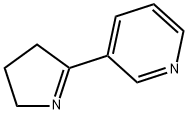
191588-94-0
- Product Name:Tenecteplase
- Molecular Formula:C₂₅₆₁H₃₉₁₉N₇₄₇O₇₈₁S₄₀
- Purity:99%
- Molecular Weight:58,951 Da
Product Details:
CasNo: 191588-94-0
Molecular Formula: C₂₅₆₁H₃₉₁₉N₇₄₇O₇₈₁S₄₀
Appearance: Commonly white to off-white powder
Throughput: 10KG/Month
Purity: 99%
Tenecteplase (CAS No: 191588-94-0) - Detailed Introduction
The Chinese generic name of Tenecteplase is Tinaiplase, with a CAS number of 191588-94-0. It is a genetically engineered thrombolytic drug widely used in the treatment of acute thrombotic diseases due to its high fibrin specificity and prolonged action. Below is a detailed overview:
1. Basic Physicochemical & Manufacturing Information
| Item | Details |
|---|---|
| English Synonyms | TNK-tPA, TNKase, UNII-WGD229O42W, etc. |
| Appearance & Properties | Commonly white to off-white powder; reconstituted into a colorless to pale yellow clear solution |
| Chemical Characteristics | Chemical formula: C₂₅₆₁H₃₉₁₉N₇₄₇O₇₈₁S₄₀; a glycoprotein containing 527 amino acids |
| Manufacturing Method | Produced via recombinant DNA technology using Chinese Hamster Ovary (CHO) cells. Three site-specific modifications are made to the gene of natural human tissue-type plasminogen activator to enhance its pharmacological properties. |
2. Core Pharmacological Properties
Mechanism of Action
As a plasminogen activator, it specifically binds to fibrin in thrombi, converting thrombus-bound plasminogen into plasmin. This subsequently degrades the fibrin matrix, achieving thrombolysis and restoring blood flow. Compared with natural tissue-type plasminogen activator, it exhibits stronger resistance to plasminogen activator inhibitor-1 (PAI-1) and a longer duration of action.
Pharmacokinetics
- Distribution: Approximates plasma volume
- Metabolism: Primarily metabolized in the liver
- Half-life: Approximately 20-24 minutes; single intravenous injection suffices for therapeutic effect without the need for continuous infusion, ensuring convenient administration.
3. Clinical Applications
Core Indications
- Treatment of acute ST-segment elevation myocardial infarction (STEMI), reducing mortality risk in patients
- Thrombolytic therapy for acute ischemic stroke (administered within 3 hours of symptom onset)
- Management of pulmonary embolism and other thrombus-related diseases
Administration & Dosage
- Route: Intravenous injection only
- Dosage: Adult dosage adjusted by body weight; conventional single-dose administration. Reconstituted drug concentration is 5mg/mL. Avoid shaking during reconstitution to prevent efficacy impairment.Example: For acute myocardial infarction patients, a single dose of 30-50mg may be administered within 6 hours of symptom onset, based on body weight.
4. Safety & Contraindications
Adverse Reactions
- Most common risk: Bleeding (severe events such as intracranial hemorrhage and cerebral hemorrhage are rare but life-threatening)
- Other reactions: Allergic responses (rash, pruritus, laryngeal edema) and arrhythmias.
Contraindications
Contraindicated in patients with:
- History of central nervous system (CNS) damage (e.g., intracranial tumors, aneurysms)
- Recent intracranial/spinal surgery or head trauma
- Active bleeding or bleeding diathesis
- Uncontrolled severe hypertension
5. Market & Approval Status
- Approved by the U.S. FDA in June 2000 and the European EMA in February 2001. Early commercialization was driven by companies such as Genentech and Boehringer Ingelheim.
- Classified as a high-alert medication, requiring strict compliance with pharmaceutical quality standards for production and sales. Clinical use must be performed and monitored by professional healthcare personnel.
Relevant Products
-
Decanoyl/octanoyl-glycerides
CAS:65381-09-1
-
Pyridoxal 5'-phosphate monohydrate
CAS:41468-25-1
-
Myosmine
CAS:532-12-7








